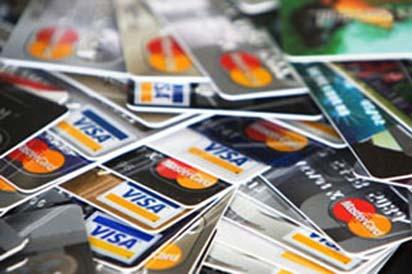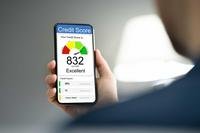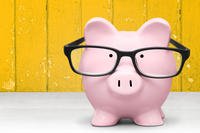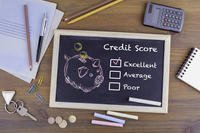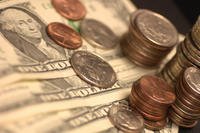Jaw-dropping low rates on mortgages and auto loans are tempting even the most cautious borrowers to take the plunge and try to get a loan to buy a home or car, or refinance the ones they have. But can those great rates you see advertised be trusted? How do you know whether the interest rate you are paying -- or being offered -- is a good one?
Before we look at specific types of loans, here are a few overarching principles that apply to all types of loans:
Check your credit. For most loans, your credit scores are going to determine which interest rate “tier” you fall into. Those with great credit scores will typically snag the best deals on auto loans, mortgages, credit cards and certain student loans. FICO scores above 760 usually get borrowers the best rates while VantageScore credit scores above 700 are usually considered prime. Of course, every lender sets its own standards.
But don’t be discouraged if you credit is good, but not great. “The good news is that credit is not the impediment for the majority of borrowers,” says Greg McBride, senior financial analyst for Bankrate.com. “For anyone with a credit score of 700 or better you are going to get the best rate you’ve ever seen. You’ll still have plenty of bragging rights.”
Watch out for fees. While a low rate may be appealing, it can lose its value when fees are piled onto the loan. With rates so low, “the strategy we are seeing for consumers is not to look so much at the rate but to avoid fees,” says James Royal, vice president, director of marketing for Informa Research Services Inc. “Avoiding fees can help you save money.”
When you can, get a fixed-rate loan rather than one with a variable rate that can change in the future. Interest rates will eventually start to rise again, so locking in a low rate now is a smart strategy. This may not always be possible, however. Most credit cards, for example, only offer variable interest rates.
Go for fixed rates.
Shop online and off. For most loans, it makes sense to shop online as well as with your local financial institution. “Do your homework online,” says Royal. “Then talk to your financial institution. A lot of banks are trying to offer incentives in order to change consumer behavior, such as having your mortgage at the same place where you have your checking account,” he explains.
Credit Cards
According to Federal Reserve data, the average rate on all credit cards is 12.09%, while the average rate charged to cardholders with a balance is 12.79%. But credit card rates can vary widely. According to Informa Research Service’s weekly interest rate review for July 17, the national average rewards card was 12.01%, but the highest rate was 24.90% and the lowest came in at 5.25%.* But to get the best rate you’ll need stellar credit.
If your current credit card rate seems high, consider transferring the balance to one of your existing cards or a new one. Just watch out for hefty balance transfer fees that can total 2 -- 4% of the transferred amount.
*All banks, thrifts, and credit unions within the Informa Research Services database. Rates supplied by Informa Research Services © 2012 Informa Research Services Inc.
Auto Loans
According to the Federal Reserve, the average 48-month new car loan rate is 4.87%. The Credit Union National Association Daily Rate Comparison puts the average 5-year new auto loan rate from banks at 4.6% versus 3.06% through credit unions.* Informa Research Service’s July 17 Interest Rate Review places the national average four-year used auto loan rate at 4.34%, with the highest rate at 11.25% and the lowest at 1.50%.**
“Car loan rates are certainly better than at the depths of the recession,” says Caroll Lachnit, features editor and consumer advice expert for Edmunds.com. “(Even) consumers with poor credit are able to get back into the market.” Lachnit recommends consumers shop for financing before they shop for their car. Otherwise you could fall victim to the yo-yo financing trap where you “think that you’ve done the deal but then you find out (the dealer) couldn’t do the deal.”
Paying a higher rate on your car loan now but not ready to trade it in? Consider trying to refinance to a lower rate. Just make sure that by doing so you “reduce the interest rate substantially without stretching out the remaining term on the loan,” warns McBride. “If you have three years left on your loan, don’t refinance any longer than three years.”
*Rates as of July 19, 2012. Data supplied by Informa Research Services. Current rates and more information available here.
**Average rates are based on direct fixed-rate loans of $15,000 for two-year-old used vehicle purchases, with a four-year repayment term.
Student Loans
If you have federal student loans or plan on using them to finance your education, understand that you can’t shop around for rates since they are set under the federal Direct Loan program. You can get a complete chart of rates for federal student loans at the Department of Education’s website.
“For new loans there is only one way to reduce the rate and that’s to sign up for auto debit,” says Mark Kantrowitz, publisher of Finaid.org. In other words, you may be able to get a small reduction in your interest rate if you agree to have your payments automatically deducted from your bank account.
Your credit score won’t be a factor in determining the rate you pay for a federal student loan. A good credit history is not a qualification for getting Stafford loans, and “Plus loans require that you don’t have an adverse credit history (no current delinquency of 90 or more days and other negative items in the last five years),” Kantrowitz explains.
Private loans are another matter. Most private loans carry variable interest rates and the interest rate you’ll pay will depend on your credit score. Borrowers are clustered into tiers based on credit scores, says Kantrowitz. But you can’t find out the credit score ranges for those tiers in advance because that’s considered competitive data. “You have to apply and get a credit check before they will tell you how much they will charge,” he warns, adding that “the best rates go to about 5% of borrowers, while two-thirds get the worst rates.”
Your best bet for getting the best student loan rate? Max out federal loans first, and be cautious when applying for private loans. Shop around, and do so in a short period of time to minimize any impact to your credit scores.
“When lenders access your score it creates an inquiry on your credit report, which can hurt your credit score. But certain types of inquiries are grouped together so you can have any number of inquiries of a certain type and they will only count as one, and student loans tend to fall into that category,” says Barry Paperno, community director for Credit.com. “So it’s a good idea to do your student loan shopping in a short period of time; ideally within a fourteen day period but definitely within a 45-day period. The length of time these inquiries are counted as one vary by scoring models, and you won’t know which one a lender uses.”
A list of private student loan lenders and the range of interest rates they charge is available at Finaid.org.
Mortgages
The Credit Union National Association lists the average 30-year fixed conforming mortgage rate at 3.67% through credit unions, and 3.59% fixed through banks as of July 19. According to Bankrate.com, the average national average interest rate is 3.87% with .43 points. The national average for a 15-year fixed mortgage loan was 4.35%, but a survey of 50 of the top 200 lenders by Informa Research Services, Inc. (as of July 17 Interest Rate Review) put the average rate at 4.07%, illustrating the difference among various lenders surveyed.*
Of all the types of consumer loan rates, mortgage rates can be the most confusing. That’s because so many factors come into play. “First; mortgage rates vary every single day. They fluctuate based upon many factors inside the US and worldwide,” says Joseph Kelly, president of ArcLoan.com. Secondly; mortgage rates vary based upon ‘cost.’ On any given day, there are a variety of interest rates available where the borrower may get a lower rate by paying additional cost, or higher rates which can even include a lender credit to the borrower.”
He illustrates that point with this example: “In today’s market a qualified borrower might obtain a 30-year fixed rate of 3.5% (APR 3.558%) for a mortgage of $200,000 with closing costs of approximately $4,000. Or the same borrower might choose a rate of 3.875% (APR 3.875%) with no closing costs. In the case of the 3.875% the lender is giving the borrower a ‘credit’ for the closing costs. Is it worth paying approximately $4,000 to save an additional $69 per month in this example? That depends on how long you expect to be in the property and what you expect interest rates do in the next few years. It is rarely a black and white decision, which is why it is important to work with a lender who will help you make the right one. ”
In fact, mortgage loan costs can be so complicated that improved mortgage loan disclosures was one of the first tasks the Consumer Financial Protection Bureau tackled. While those forms are still in development, you can use them as a guideline when you shop for a loan. If you are shopping for a new mortgage loan or to refinance your current loan, be sure to ask about points and closing costs as well as the interest rate.
*APRs are based on a $200,000 loan, owner-occupied, single-family residence, and an 80% loan-to-value ratio, on a purchase transaction.
